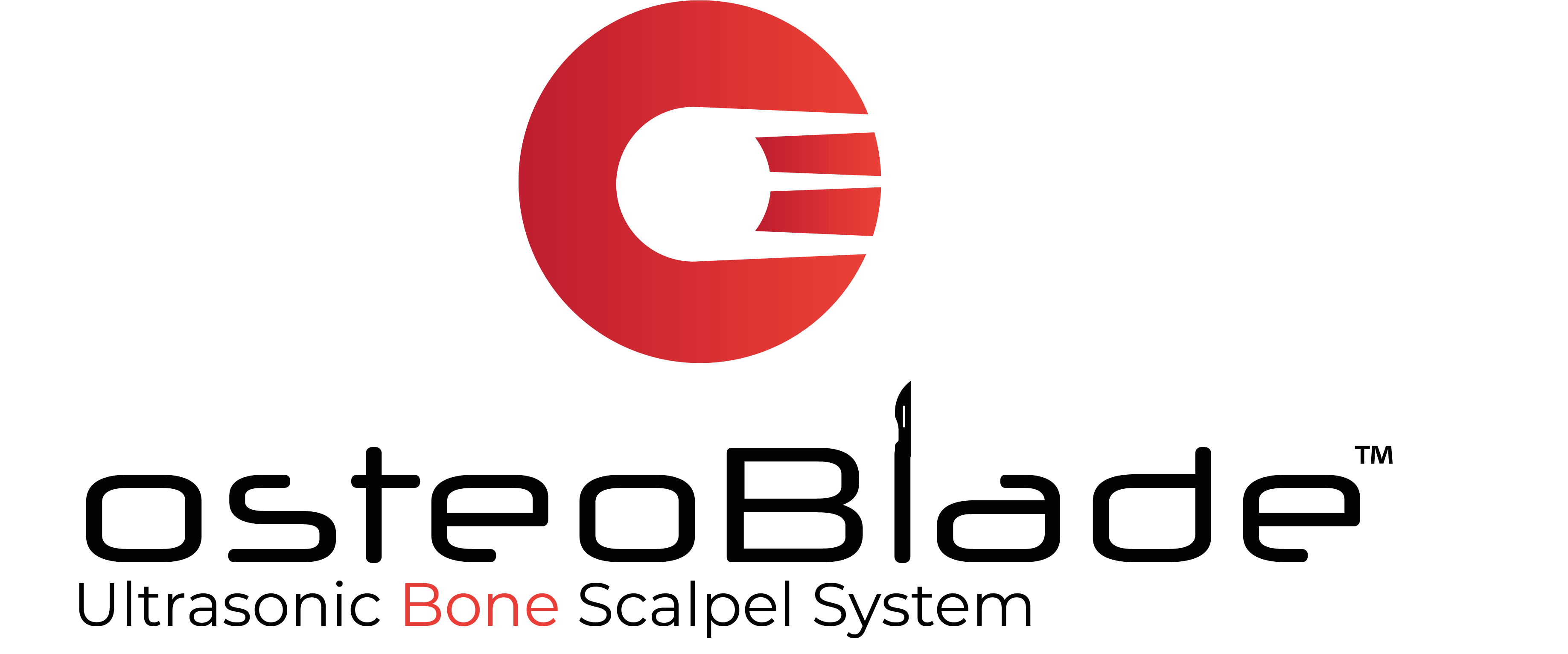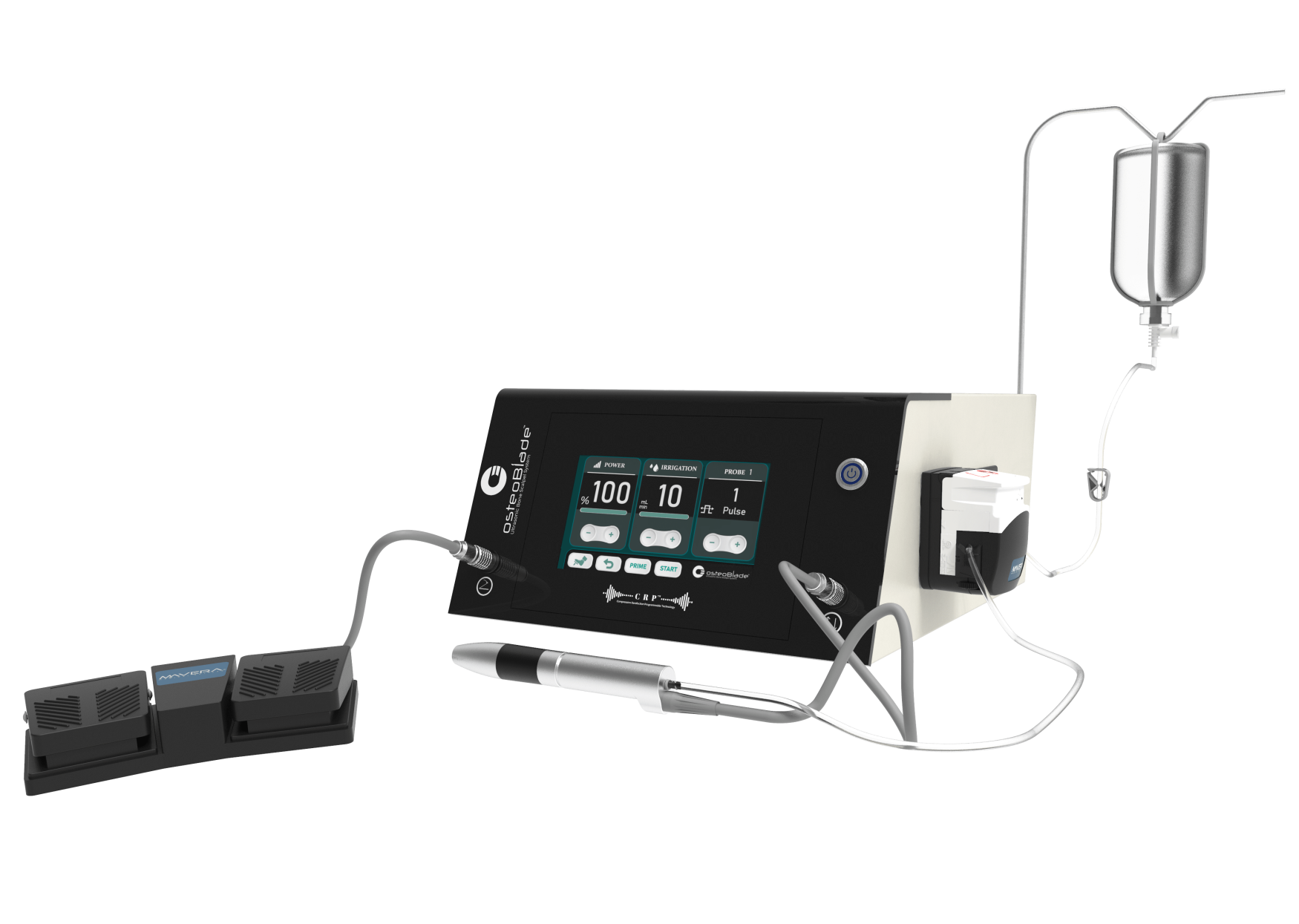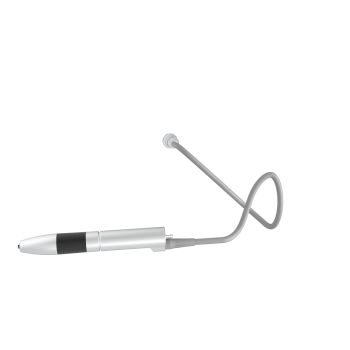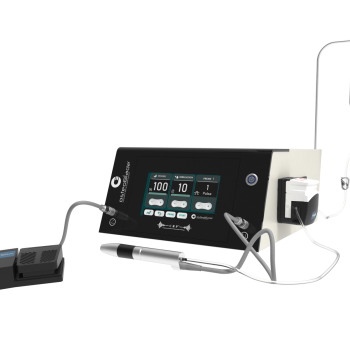
“A superior bone scalpel method going beyond just ‘cut’ the hard tissue”
OsteoBlade™ Ultrasonic Bone Scalpel:
 A
RevolutionaryDevice Offering Better Results
A
RevolutionaryDevice Offering Better Results
- Tissue Selective
- Less Bleeding
- Improved Efficiencies
Mechanism of Action
OsteoBlade™ Ultrasonic Bone Scalpel is intended to be used in selectively fragmentation, resection, emulsification, irrigation and/or aspiration of hard (e.g.: bone) tissue. Much like an osteotome, the blade moves forward and backward. However, the amplitude of this movement is much smaller than that of an osteotome (35-300 microns), thus transferring only a small amount of energy to bone with each impact. The very high frequency at which the blade moves back and forth to impact the bone (26- 36 kHz) compensates for the small energy of each individual impact, thus resulting in a large transfer of energy to bone at the point of contact. Again, this energy disintegrates a narrow sliver of bone and develops a cleavage plane.
Principle of Operation
Ultrasonic surgery is realized between 20-60 kHz. In principle, the outlet voltage is supplied at 50 to 60 hertz. The generator boosts the frequency to 25-36 K hertz. The resulting ultrasonic frequency is delivered into the handle. Piezo-crystals transform the electrical energy into mechanical vibratory motion. This causes the blade to oscillate longitudinally at the ultrasonic frequency of 26.000-36.000 strokes per second. Sterile Saline is pumped toward the blade when cooling is required.
1-) Tissue Selective
The relative selectivity of OsteoBlade™ for bone cutting has to do with the relative rigidity of bone comparedto soft tissues. When the blade comes in contact with rigid bone, the bone does not bend, deform or move away from the tip. As a result, a large amount of energy is transferred to a small amount of bone at the point of contact, resulting in destruction of that bone. In contrast, soft tissue structures (such as ligamentum flavum, posterior longitudinal ligament, and dura) can bend, deform, move away, and vibrate upon contact with the blade, thus dampening the energy transfer and protecting the tissue from destruction. It is important to note that this selectivity is not absolute. With sufficient time and pressure, soft tissues will be cut. Safe and efficient use in spine surgery depends on development of a tactile “feel” for penetrating the inner cortex of bone. After this penetration occurs, the blade should come in contact with underlying tissues for a limited time with limited pressure.
2) Less Bleeding
Surgeons have also noted significantly less bleeding in operations performed with ultrasonic scalpels (1). Ultrasound has coagulative effects and can cauterize the small venous channels in cancellous bone. This heat is quickly dissipated by efficient irrigation mechanism. More importantly, en bloc (vs. piecemeal) removal of bone minimizes the duration (and therefore the total volume) of bleeding from epidural veins while the bleeding is controlled.
3-) Improved Efficiencies
The longitudinal blade motion enables precision osteotomies free of gyroscopic effects and facilitates cutting techniques for en-bloc bone dissection and in close proximity to delicate soft tissue structures. Substantial time savings have been reported for advanced osseous resections in the spinal anatomy such as multilevel laminectomies and bilateral facetectomies.
Indications
OsteoBlade™ Ultrasonic Bone Scalpel System is indicated for using selectively fragmentation, resection, emulsification, irrigation and/or aspiration of hard (e.g.: bone, calcified lesion) tissue in the following surgical specialties: Orthopedic Surgery, Plastic and Reconstructive Surgery, Neurosurgery, Thoracic Surgery, Thoraco-Lumbar-Laminectomy, Cardiovascular Surgery Laminotomy, Foraminotomy, Sacral Laminoplasty, otolaryngology (ear nose and throat) İnterventions.




 A
A

